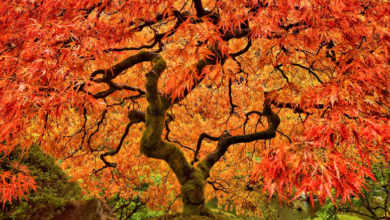https://noticviralweb.blogspot.com/2018/02/pacarana-duchandose.html

Have you ever heard of a pacarana? This elusive rodent, often overshadowed by its more famous relatives like the capybara and guinea pig, is a marvel of the animal kingdom. In this article, we’ll dive deep into the world of the pacarana, focusing on its unique behaviors, particularly its bathing habits. Understanding these behaviors not only enriches our knowledge of wildlife but also highlights the significance of preserving their natural habitats.
What is a Pacarana?
Description and Characteristics
The pacarana, scientifically known as Dinomys branickii, is a large, nocturnal rodent native to South America. With a chunky body, short limbs, and a bushy tail, the pacarana can grow up to 79 cm in length, excluding its tail, which adds another 20 cm. Its fur is generally dark brown or black, speckled with white or yellow spots, making it a visually striking animal.
Habitat and Distribution
Pacaranas are found in the tropical rainforests of the western Amazon Basin, spanning countries like Peru, Brazil, and Colombia. They prefer dense, undisturbed forests where they can forage for food and find shelter from predators.
Unique Behaviors of Pacarana
Social Structure
Pacaranas are known to be solitary creatures, though they may occasionally be spotted in pairs or small family groups. Unlike many rodents, they do not form large social colonies.
Feeding Habits
Primarily herbivorous, pacaranas feed on a variety of fruits, leaves, and stems. They have a unique way of holding food with their forepaws, similar to how a squirrel might eat.
Grooming Practices
Grooming is an essential part of a pacarana’s daily routine. They meticulously clean their fur to remove dirt and parasites, which is crucial for maintaining their health.
The Bathing Behavior of Pacarana
Importance of Bathing in Rodents
Bathing is a common behavior among many rodent species. It helps them regulate their body temperature, remove parasites, and keep their fur clean and free of debris.
How Pacarana Bathes
Pacaranas, like many rodents, engage in self-grooming to keep clean. However, they also exhibit unique bathing behaviors, such as rolling in dust or water. This behavior helps them maintain their fur in optimal condition and protects against parasites.
Observations from the Wild
In the wild, pacaranas have been observed seeking out water sources for bathing. They may also use dust baths as a way to rid their fur of excess oils and parasites.
Scientific Studies on Pacarana Bathing
Key Research Findings
Several studies have focused on the grooming and bathing habits of pacaranas. These studies highlight the importance of these behaviors for their overall health and well-being.
Case Studies and Observations
Field observations have provided valuable insights into how pacaranas interact with their environment. Researchers have noted that bathing behaviors vary depending on the availability of water and the presence of predators.
Implications of Bathing Behavior
Understanding the bathing behavior of pacaranas can help in conservation efforts by providing insights into their habitat needs. Ensuring they have access to clean water sources is crucial for their survival.
Comparing Pacarana with Other Rodents
Bathing Habits of Similar Rodents
Other rodents, such as chinchillas and degus, also exhibit similar bathing habits. Chinchillas, for instance, are known for their dust baths, which help maintain their dense fur.
Unique Traits of Pacarana
While many rodents share similar grooming behaviors, pacaranas stand out due to their size and solitary nature. Their specific bathing habits, especially in the wild, are less documented and offer a unique area of study.
Human Interaction and Pacarana
Conservation Efforts
Pacaranas are currently listed as a vulnerable species due to habitat loss and hunting. Conservation efforts focus on protecting their natural habitats and reducing human encroachment.
Pacarana in Captivity
In captivity, pacaranas require environments that mimic their natural habitat, including access to water for bathing. Zoos and wildlife centers play a crucial role in their conservation.
Importance of Ethical Wildlife Observation
Observing pacaranas in the wild should be done ethically to minimize disturbance. Respecting their natural behaviors and habitats is essential for their preservation.
Conclusion
Pacaranas are fascinating creatures with unique behaviors that are still being uncovered by researchers. Their bathing habits, in particular, offer insights into their health and environmental needs. By understanding and protecting these behaviors, we can ensure the survival of these remarkable rodents.
FAQs
What is a Pacarana?
A pacarana is a large, nocturnal rodent native to South America, known for its distinctive spotted fur and herbivorous diet.
How often does a Pacarana bathe?
Pacaranas engage in self-grooming regularly and may bathe in water or dust depending on their environment.
Are Pacaranas endangered?
Pacaranas are currently listed as vulnerable due to habitat loss and hunting pressures.
Can Pacaranas be kept as pets?
Pacaranas are wild animals and are not suitable as pets. They have specific habitat and dietary needs that are challenging to meet in captivity.
Where can I learn more about Pacaranas?
To learn more about pacaranas, you can visit wildlife conservation websites, zoos with pacarana exhibits, or read scientific journals focused on South American wildlife.



